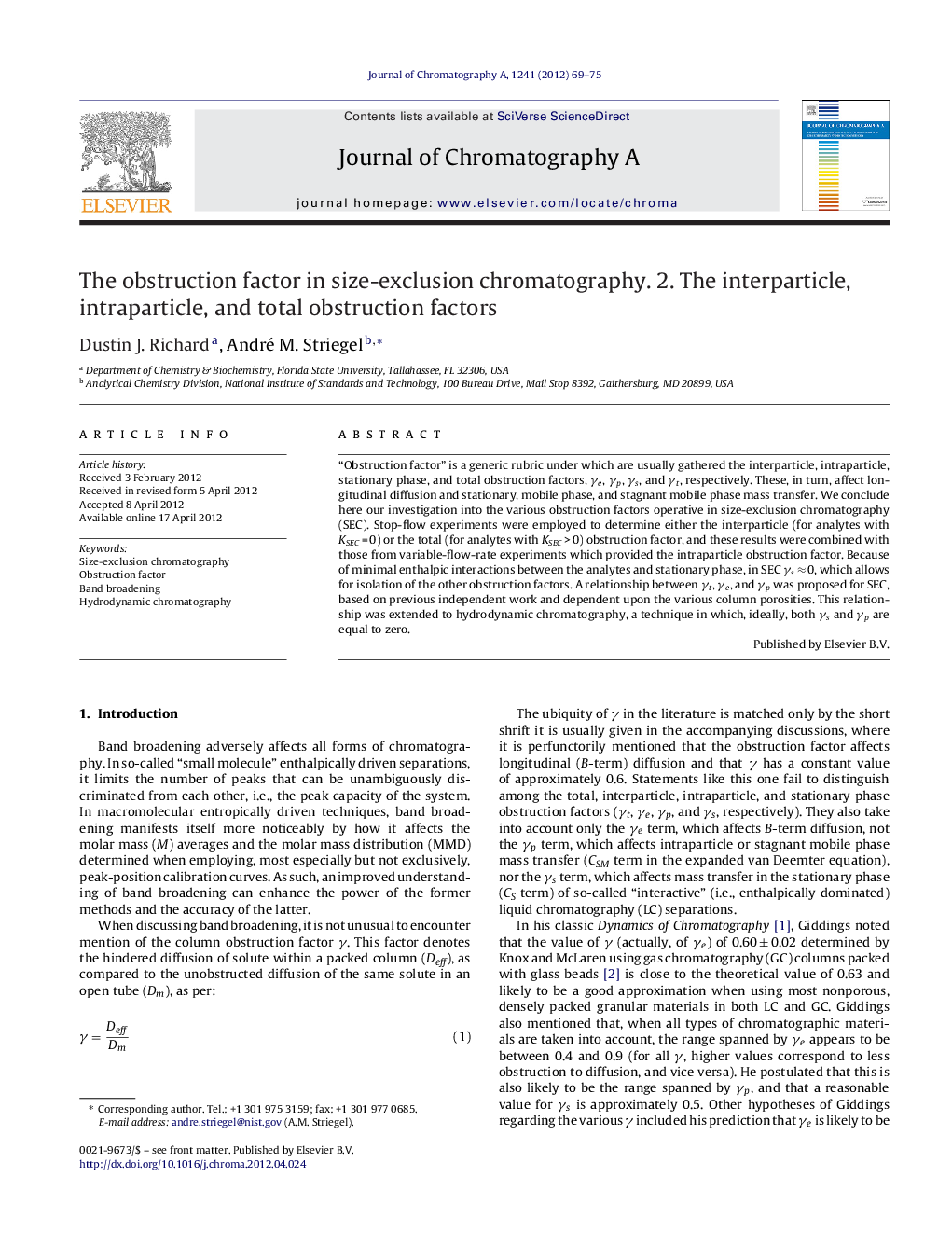| Article ID | Journal | Published Year | Pages | File Type |
|---|---|---|---|---|
| 1201836 | Journal of Chromatography A | 2012 | 7 Pages |
“Obstruction factor” is a generic rubric under which are usually gathered the interparticle, intraparticle, stationary phase, and total obstruction factors, γe, γp, γs, and γt, respectively. These, in turn, affect longitudinal diffusion and stationary, mobile phase, and stagnant mobile phase mass transfer. We conclude here our investigation into the various obstruction factors operative in size-exclusion chromatography (SEC). Stop-flow experiments were employed to determine either the interparticle (for analytes with KSEC = 0) or the total (for analytes with KSEC > 0) obstruction factor, and these results were combined with those from variable-flow-rate experiments which provided the intraparticle obstruction factor. Because of minimal enthalpic interactions between the analytes and stationary phase, in SEC γs ≈ 0, which allows for isolation of the other obstruction factors. A relationship between γt, γe, and γp was proposed for SEC, based on previous independent work and dependent upon the various column porosities. This relationship was extended to hydrodynamic chromatography, a technique in which, ideally, both γs and γp are equal to zero.
► Stop-flow experiments determined the total or interparticle obstruction factor of SEC columns. ► Variable-flow-rate experiments provided the intraparticle obstruction factor. ► A relation between the total, intraparticle, and interparticle factors was postulated. ► The above relation was extended to hydrodynamic chromatography.
